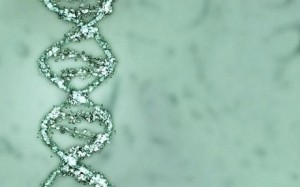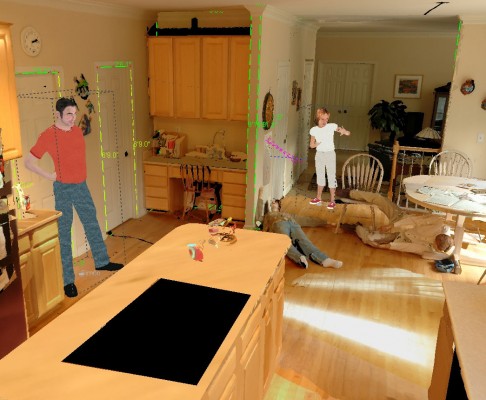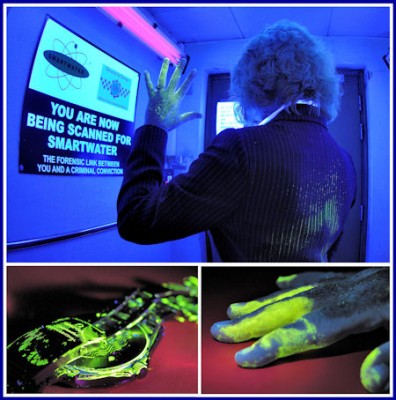Hi-tech GPS enabled phones, more accurate guns and faster cars – The criminals have taken their favorite cat-and-mouse game with the police on to a whole new level. Crime-fighting has become tough but law enforcement agencies are not willing to give up, not yet. From vomit-inducing flashlight to brain fingerprinting, here are the top ten hi-tech ways in which the cops are getting back at the goons.
10. Automated license plate recognition cameras
All the car thieves out there have to now learn a magic trick as well. Once they steal the car, they have to make it disappear because taking it out for a run might land them behind bars.
Automated license plate recognition cameras are being used by patrol cars (even choppers) to track down auto-related crimes. These cameras can take pictures of the license plates from a distance. The pictures are run against a database of stolen vehicles to find possible matches.
9. Brain Fingerprinting
Remember how cops are advised to get into the mind of the criminals to handle them better? Well, they are now taking the advice literally. In brain fingerprinting, the subject is shown pictures on a computer screen. This person has to wear a headband that will measure cognitive brain responses to the stimuli he watches on the screen. An EEG (electroencephalograph) picks up distinct responses to words, sounds or images that are related to the crime.
The technology has been used to obtain guilty plea from criminals who had refuted allegations of knowledge about their crimes. Brain fingerprinting revealed that their brains responded to crime-related details shown on the computer.
8. Shoe Printing

Here is another technology that is going to make “perfect crime” something that happens only in fiction. Researchers in UK have made an automated system that compares features on shoe soles of suspects with those of the shoe prints left behind at the crime scene. Since shoe prints are something that criminals often leave behind, a UK act gives this forensic evidence the same legal validity as DNA and fingerprints.
Shoe prints have been used in the past as evidence but it involved human analysis and interpretation. The new technology uses image processing to find out about the sole’s features like logos, circles or ridges. The results are compared with the prints taken in custody suites for a possible match.
7. Shot Spotting
The time between a gunshot and arrival of police can make a huge difference in nabbing the criminal or providing medical help. Cops in Washington, D.C. have employed an acoustics-based system called ShotSpotter to drastically minimize this response time.
The gunshot sensor system picks up sound waves of a muzzle blast. GPS receivers in the system narrow down to the exact coordinates of the spot and forward it to nearest 911 centers.
6. Plant DNA to knock off Counterfeiters

The bad news has arrived for the fakers worldwide. Scientists have discovered something that is all set to bust the fake brand party. This little something is no GPS tracking device but a simple code embedded in a plant. An elite label is now going to use plant DNA in its products to make them distinctly unique. All that the law enforcement agencies would need are scanners to tell the genuine product from the fake one.
A similar DNA marker was embedded in a bank’s cash boxes. When two men tried to tamper with the boxes in bank heist, the DNA strands in the cases helped the police to nab the culprits.
5. 3-D Technology

Law enforcement agencies have finally found their new crime buster and it comes in the “avatar” of three-dimensional technology. It can pervade all aspects of law, right from nabbing the criminal to bringing him to justice.
It is now possible to create a 3-D image of a bullet that has been fired and then find a match from previous criminal cases of shoot-outs. A Forensic Science institute in Connecticut can deftly produce 3D images of crime scene using software called DeltaSphere-3000 3D Scene Digitizer. Police in Japan have employed the technology for facial recognition to fight crimes committed by people of foreign origin. Three-dimensional images of public places and structures are being stored to help the police foil future terrorist attempts.
4. Property Marking System

No, we are not talking about dogs here. Humans too, can now mark their property and goods to deter trespassing and forceful entries.
Many houses in the UK are using a generic property marker called SmartWater to deter thieves and burglars. This water-based solution can be sprayed or painted to mark your prized possessions with a unique chemical code. In cases of thefts, stolen items can be identified by the chemical “barcode” and returned to the actual owner.
3. Vehicle Slowdown System
Car chase movie scene just got shorter. General Motors has equipped its cars with a unique in-vehicle safety system called OnStar. Besides being GPS-enabled, the system also comes with a helpful vehicle slowdown feature. Cops can ask an OnStar operator to transmit a signal to the car being pursued. The signal restricts the vehicle’s fuel reserves and slows it down to about five miles an hour.
2. Body Odor to sniff out criminals

You read it right. It is now possible to use body odor as a biometric identifier to nab a culprit. A police canine research center in China is creating a unique database of people with criminal records. The center is collecting body odor of criminals so that they can be later used to match the smell in a crime scene with the help of their ace canines.
1. Vomit Inducing Flashlight
The US Department of Homeland Security has developed a flashlight that is guaranteed to bring a fleeing criminal down on his knees. What else would he do when he is gripped by a sudden bout of horrid puking?
The hi-tech flashlight, called the Dazzler, emits LEDs that can have psychophysical effects on a person. It can cause immediate immobility through extreme physical imbalance like disorientation and nausea. Now we know why the cops crib about how policing has become a really dirty job.
